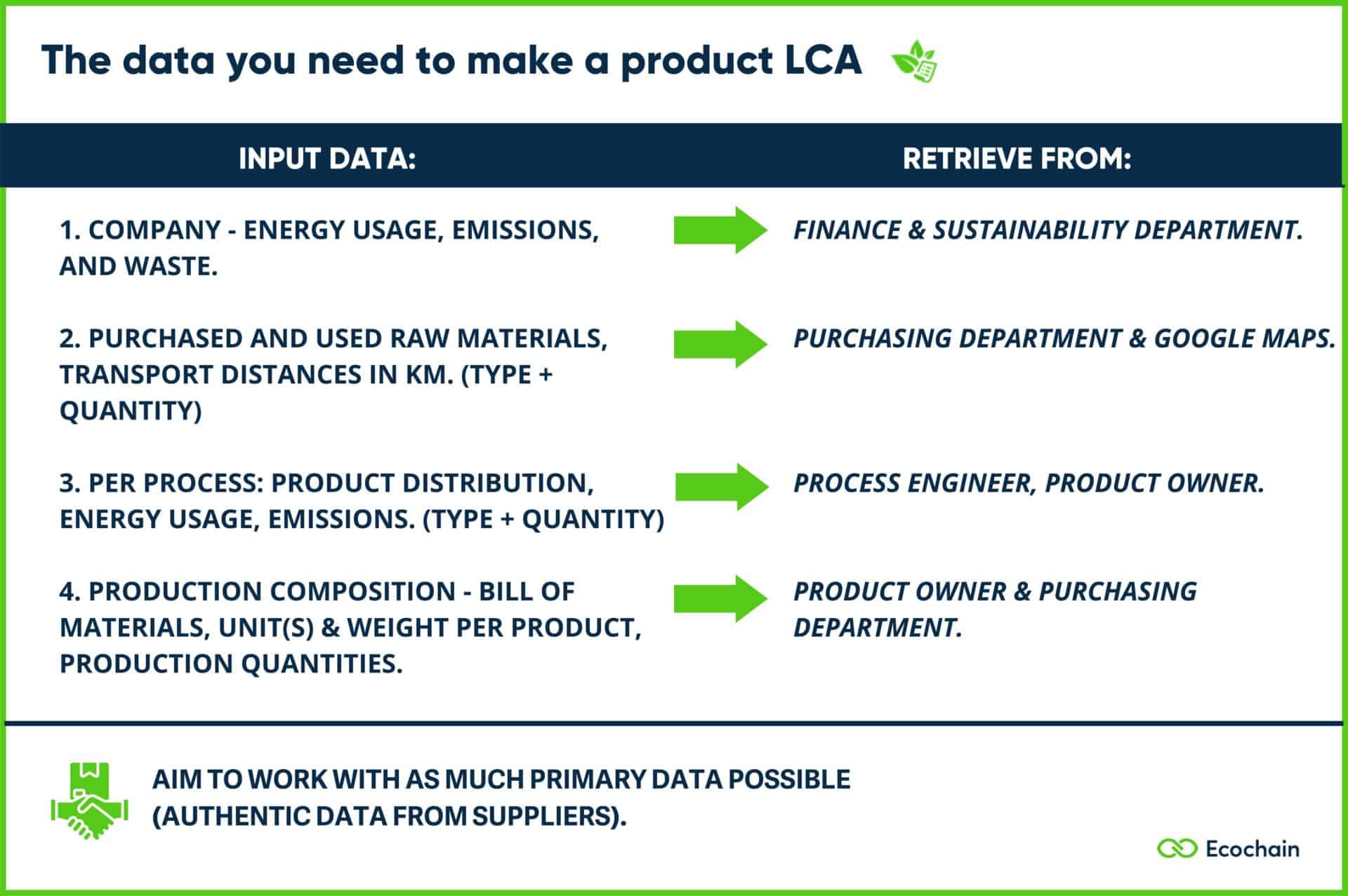The data you need for a Life Cycle Assessment (LCA)
Data on your usages & emissions, utilities, transport, materials, etc. Measuring LCA’s of products always starts with data collection. But what data do you need- from who?
Data on your usages & emissions, utilities, transport, materials, etc. Measuring LCA’s of products always starts with data collection. But what data do you need- from who?

Life Cycle Assessment (LCA) is a scientific method to measure the environmental footprint of a product. The result: 15+ impact outcomes. But before you can measure, you need information on your product. Think of data on your usage & emissions, utilities, transport, materials, etc.
That’s why the first step in measuring LCA is Data Collection.
Data collection can quickly turn into a “help-how-should-I-do-this-without-a-headache-moment”. We don’t like headaches. After reading this article, you’ll know:
Let’s go through the phases of data collection in LCA.
Usually, this is done by the sustainability manager. If your company doesn’t have a sustainability manager yet, it can covered by a data specialist, product manager, accountant, or the finance department.
Which individual product(s)/product portfolio do you want to measure the environmental footprint for? Deciding what and how much you’ll measure is crucial for determining the data you need. Will you focus on one product? Or do you need the footprints of a whole portfolio?
Generally speaking, the product lifecycle consists of five phases:
Based on the phases you’re interested in or have data available on, you can choose to leave in or take out phases. The data you need differs per scope. There are three main lifecycle scopes:
Choosing your model defines your results and how to communicate them. It’s CRUCIAL to transparently communicate your chosen lifecycle model to your stakeholders. As your results cannot say anything about phase 4 or 5 – if you didn’t include them.

4. Create a project plan with budget, scope, and timeframe.
For both product portfolio footprints & single product footprints (scope = cradle-to-gate) you need data on:
a. Company’s energy usage, emissions, and waste. (type + quantity)
b. Purchased and used raw materials, transport distances in km. (type + quantity)
c. Per process: product distribution, energy usage, emissions. (type + quantity)
d. Production composition – BOM (bill of materials), unit(s) & weight per product, production quantities.

The use phase and end-of-life can both play a large role in your product’s footprint. Create scenarios based on your product experience (e.g. product usage requirements). Or existing industry standards/reports on the product’s sector (e.g. standards waste procedures).
Primary data is raw data that is collected from main sources. It covers your raw process- and site-specific data, estimates, statistics, and bookkeeping. Creating a list of all the necessary inputs and outputs of your product’s lifecycle. These are then connected to corresponding impacts when you perform an LCA.
This data also includes raw data from your suppliers and distributors. You can request inventory data from your suppliers, but the best option is to ask for LCAs of their products (or EPDs).
Primary data is crucial for LCA:
Read more about primary vs secondary data in LCA here.
In phase 2, we discussed which departments hold the data you need. Make sure to inform these departments in time and make them responsible for their data delivery.
Environmental data is often a new data flow within a company. Involve your data specialist in setting up this new sustainability flow correctly. The necessary data should go to the right output format for your measurements. This ensures: